'Source?'—Discover Bangladesh’s original manga stall at the Ekushey Book Fair
'Source?'—Discover Bangladesh’s original manga stall at the Ekushey Book Fair
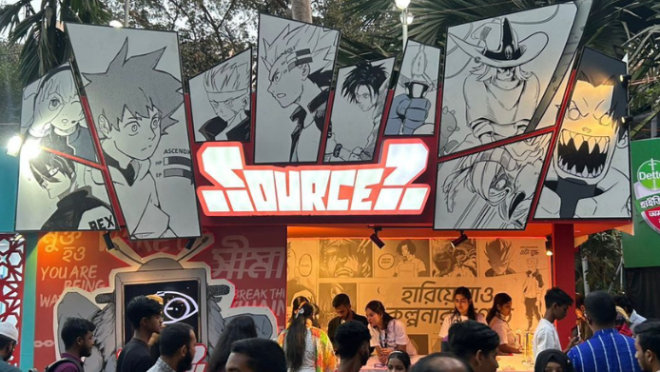
Inside the Bangla Academy section of the Ekushey Book Fair, there’s a stall that could make any manga enthusiast (even the fake ones who have only watched Death Note) scream in delight—a dedicated manga stall right in the heart of the fair! What’s even better? These manga comics are in Bangla, featuring stories rooted in Bangladeshi culture.
Introducing “Source?”, an original manga publisher in Bangladesh, brought to you by Fournetsha Bangladesh Limited—a subsidiary of Japan’s largest printing and bookbinding company, Fournetsha.
Manga, but ‘Made in Bangladesh‘
For those unfamiliar, manga refers to Japanese comics and graphic novels, characterised by bold strokes, impressionistic backgrounds, high-contrast black-and-white artwork, and, of course, those signature big-eyed characters.
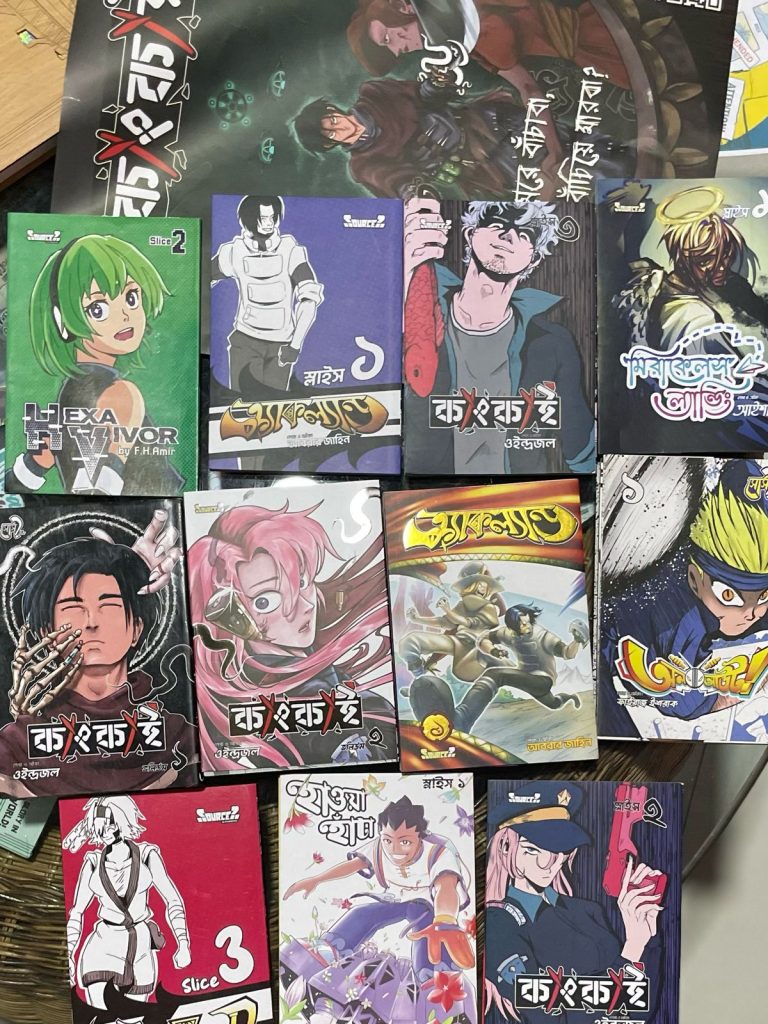
So, does that mean everything in manga is inherently Japanese? Not necessarily. At Source?, you’ll find a Bangladeshi flavour—local protagonists wearing panjabis and probably living in Gulistan! Granted, they still resemble Japanese characters more than Bangladeshis, but according to Rafi Mohammad Fahim, Head of Marketing at Source?, this is just the beginning. “We have a long way to go before Bangladeshi culture gains global recognition through manga,” he admits.
The story behind ‘Source?’
Although Fournetsha Bangladesh has been operational since 2018, Source made its debut at the 2023 Ekushey Book Fair. The company’s CEO, Konosuke Takahashi, was seen actively engaged at the stall, while we sat down with Rafi to discuss their journey.
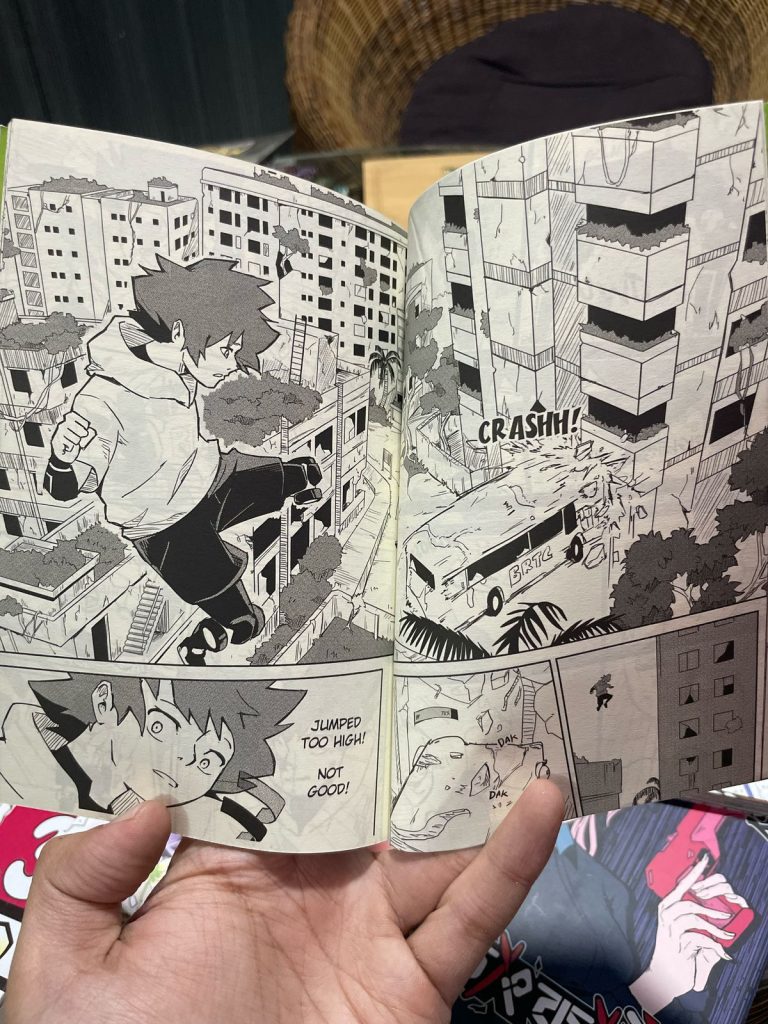
But why the question mark in ‘Source’? Rafi laughs, explaining, “In online anime communities, whenever a new manga or anime scene was released, people would ask, ‘Source?’—meaning, where did this come from? We drew inspiration from that phrase and decided to boldly answer, ‘We are the source!’ If you’re looking for manga, you’ll find it here.”
Japanese vs. Bangladeshi Manga—What’s the difference?
“The difference lies in the cultural representation,” Rafi explains. “Japanese manga reflects Japanese culture, but our goal is to create locally themed manga.” However, he acknowledges that the transition is still in progress. “Every artist has their own inspirations, which is why our characters still have a Japanese influence. It will take time to fully incorporate Bangladeshi cultural elements.”
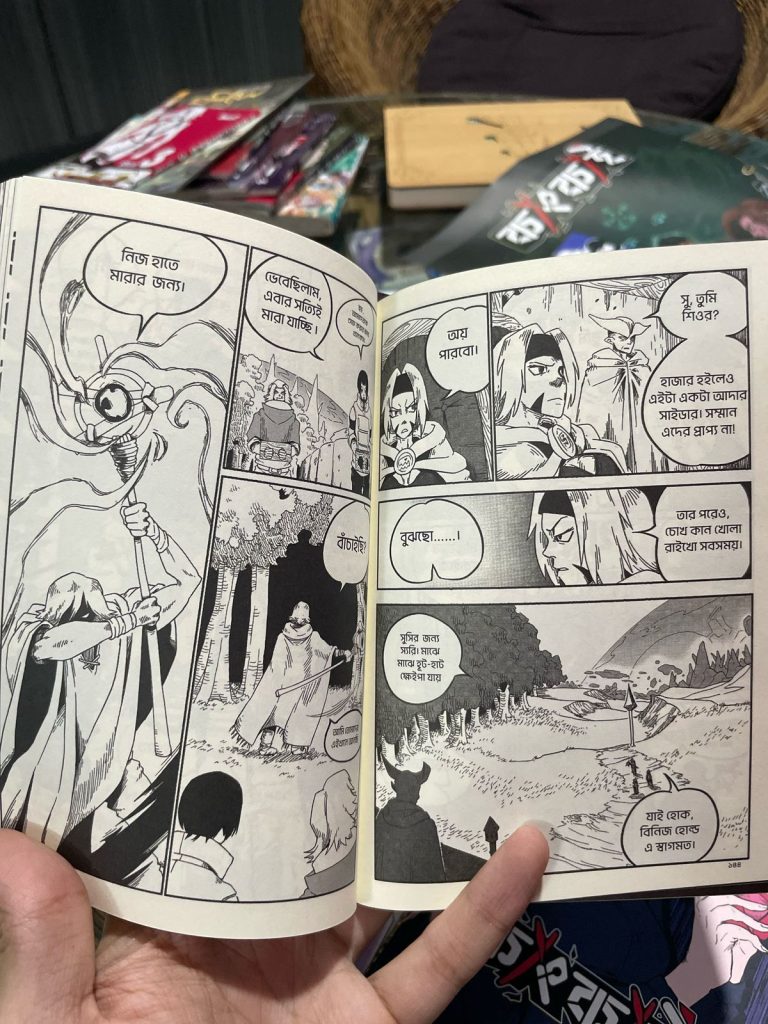
Flipping through a manga book, he points out a story set in Gulshan Chattar, while another one takes place in Dhaka, in the year 2075, featuring hoverboards and a futuristic cityscape. “Our vision is to build a local manga industry and eventually provide Bangladeshi artists with a platform to exhibit their work internationally,” Rafi adds.
How big is the Manga industry in Bangladesh?
“Not very big—yet,” Rafi admits. “But it has huge potential. Around 40-50% of our readers are newcomers, mostly aged 12 to 24, though we also have adults in their 50s who visit with their kids and reminisce about their own anime-loving days.”
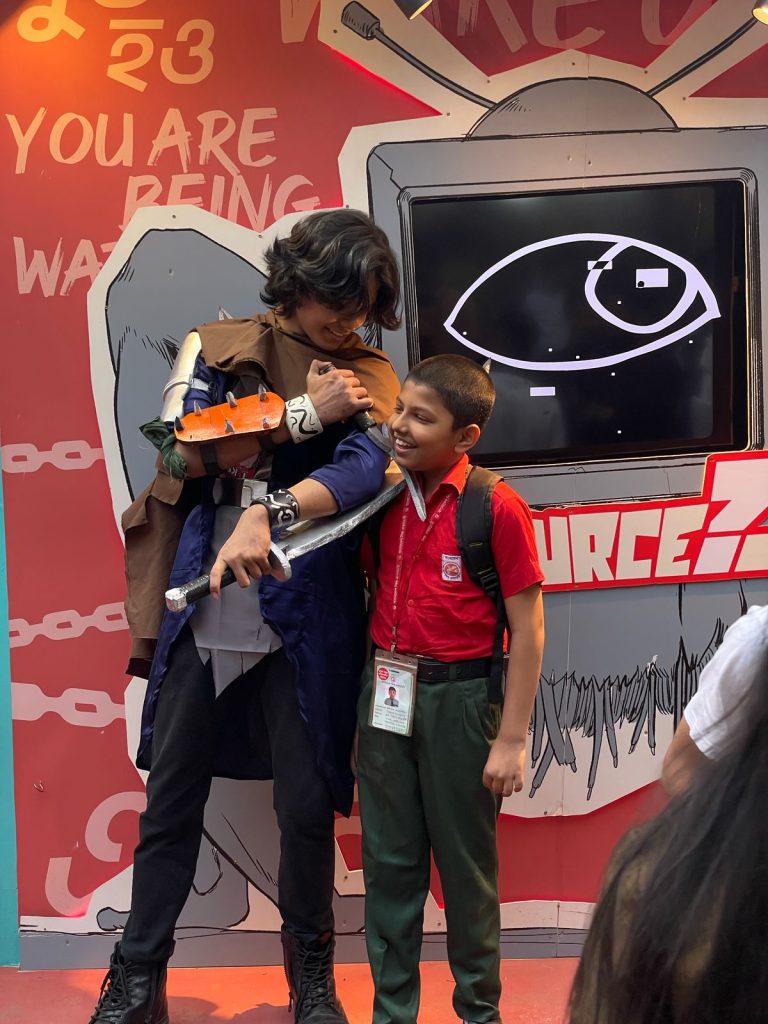
Manga covers a wide range of genres, but for now, readers are primarily drawn to action and thrillers. However, Source? is expanding into romance and horror to attract diverse audiences.
Challenges and misconceptions
Building a manga industry in Bangladesh hasn’t been easy. “Many people, especially parents, struggle to understand what manga is,” Rafi says. “They see it as just ‘silly cartoons’ and question its value. But in reality, manga can be deeply educational. As a manga and anime fan myself, I’ve seen how characters face moral dilemmas, hardships, and personal growth. Convincing people of manga’s storytelling depth has been a challenge.”
One of their titles, Qangkai, follows 17-year-old Kaal in a dystopian world where pollution and corruption reign. A deity curses humanity, giving Kao two bracelets—one that saves a cursed person, and another that dooms someone else to death.”
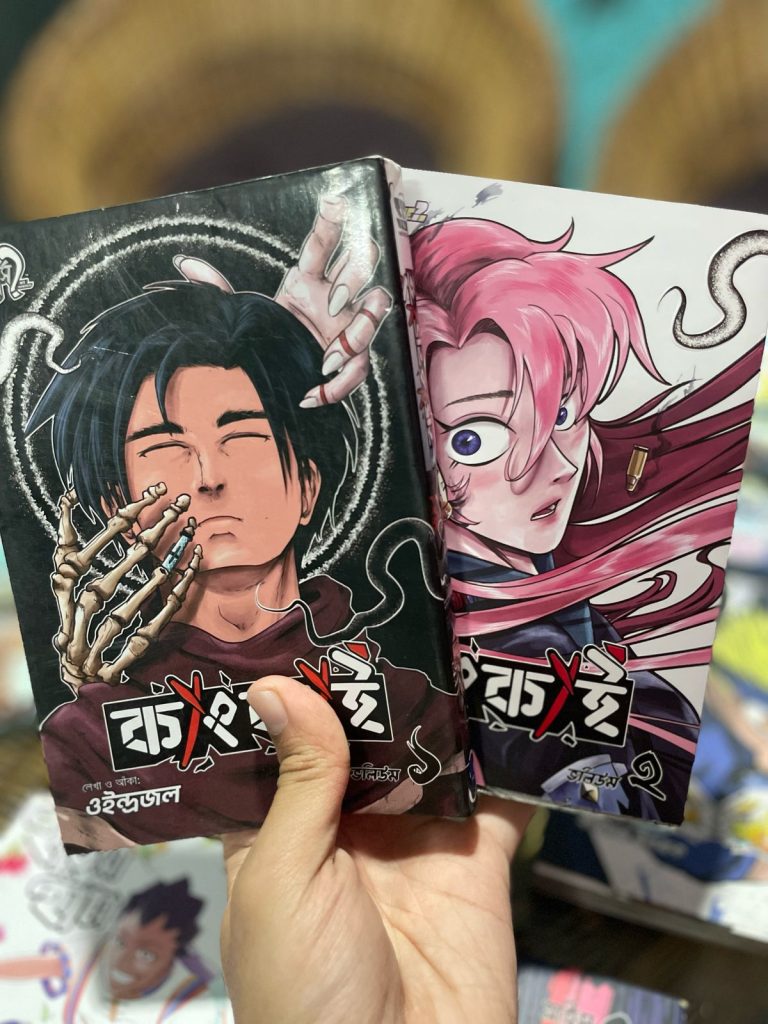
“When he discovers his own sister is cursed, he faces an impossible moral dilemma. “See? The themes aren’t just about little boys with superpowers—they can be dark, thought-provoking, and complex,” Rafi points out.
Beyond anime fans—who’s the target audience?
While anime lovers are their initial audience, Source? aims to reach a broader demographic. “Not everyone is into action-packed stories, so we’re diversifying our catalog. Romance, horror, sci-fi—we’re covering it all,” Rafi assures.
The passion behind the art
The stall at the fair is designed in bold red, a tribute to the July Revolution. Even the team’s T-shirts reflect this theme. “Our artists are incredibly passionate. Each drawing is painstakingly hand-drawn, and it takes a huge amount of effort,” Rafi says. “We’ve had many aspiring artists approach us, eager to publish their work. It’s amazing to see this growing community.”
If you want to experience a Bangladeshi manga stall, visit stall number 966-67 at the Bangla Academy premise.


